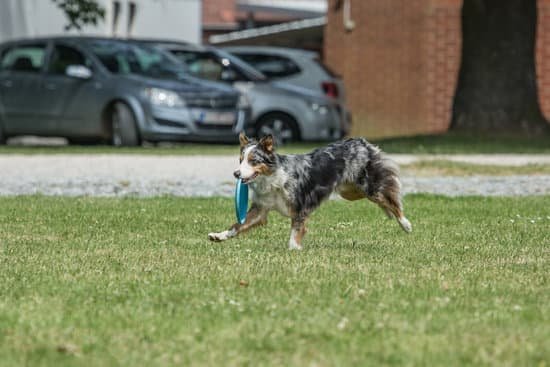One of the biggest challenges dog owners face is dealing with their pet’s biting behavior. Whether it’s chewing on furniture, shoes, or even your hands, biting can be both frustrating and destructive. However, by understanding the instinctual behavior of dogs and the importance of training, you can effectively teach your dog to stop biting everything in sight.
Dogs have a natural tendency to bite and chew on objects as a way to explore their environment and alleviate discomfort. This behavior is especially prevalent during teething stages or when they are feeling bored or anxious. Without proper training and guidance, this innocent behavioral trait can quickly turn into a destructive habit that causes damage to your belongings.
Training your dog not to bite is crucial not only for maintaining a harmonious household but also for ensuring their overall well-being. It establishes boundaries and helps them understand what is acceptable behavior. By effectively communicating with your furry friend and consistently implementing proper training methods, you can create a strong foundation of trust and establish yourself as the pack leader – an essential aspect of curbing biting behavior.
In the following sections of this article, we will delve deeper into the root causes of excessive biting behavior in dogs and explore various techniques to train them successfully.
By addressing teething issues, providing appropriate chew toys, using positive reinforcement techniques, teaching essential commands such as “leave it” and “drop it,” redirecting energy through exercise and mental stimulation, maintaining consistency in training efforts, and knowing when to seek professional help when needed – you’ll be well-equipped with the knowledge necessary to help your beloved companion overcome their biting tendencies.
So let’s get started.
The root causes of excessive biting behavior in dogs
Excessive biting behavior in dogs can be caused by various factors, including teething, boredom, anxiety, or a lack of proper training. Understanding these root causes is essential when it comes to addressing and preventing destructive biting habits in your furry friend.
Teething is a natural process that puppies go through, and it can cause discomfort and irritation in their gums. As a result, dogs may resort to biting on objects to alleviate the pain. Providing appropriate teething toys and keeping them readily available can help redirect their biting behavior onto more suitable items. It’s important to choose durable and safe chew toys specifically designed for teething puppies to avoid any choking hazards or ingestion of harmful materials.
Boredom is another common cause of excessive biting behavior in dogs. When they don’t have enough mental or physical stimulation, they can become restless and resort to chewing as a way to relieve boredom.
Ensuring that your dog has enough exercise and engaging activities throughout the day can significantly reduce their urge to bite on inappropriate objects. Regular walks, interactive toys, puzzle feeders, and games such as fetch or hide-and-seek are great ways to provide mental stimulation for your furry companion.
Anxiety can also lead to excessive biting in dogs. Dogs who are feeling anxious may bite as a way of comforting themselves or seeking attention. In such cases, addressing the underlying anxiety is crucial for resolving the biting behavior. This may involve creating a calm environment for your dog, using anxiety-reducing techniques such as desensitization or counter-conditioning exercises, or even seeking professional help from a certified dog trainer or behaviorist.
Finally, a lack of proper training can contribute to excessive biting behavior in dogs. Without consistent guidance and clear boundaries, dogs may not understand what is acceptable to bite and what isn’t. Establishing yourself as the pack leader through effective communication and consistent training methods is essential for curbing this behavior.
By identifying the root causes of excessive biting behavior in dogs, you can take appropriate steps to address and prevent it. Understanding the importance of teething toys, providing mental and physical stimulation, addressing anxiety issues, and establishing consistent training methods are all crucial for helping your furry friend develop good behavior habits.
Building a foundation of trust and establishing yourself as the pack leader
Building a strong foundation of trust and establishing yourself as the pack leader is crucial when training your dog to stop biting everything. Dogs are instinctual creatures that look for a leader to guide them, and it is essential for you to take on that role in order to effectively address their biting behavior. The key to becoming your dog’s pack leader lies in effective communication and consistent training methods.
Effective communication is vital in building trust with your dog. This involves using clear, concise commands and cues that your dog can easily understand. Consistency is also key – use the same commands or cues each time you want to redirect or correct your dog’s biting behavior. By consistently using the same commands, your dog will begin to understand what is expected of them.
Consistent training methods are equally important when establishing yourself as the pack leader. Dogs thrive on routine and repetition, so it’s important to have a set schedule for training sessions. This regularity will help reinforce the rules and boundaries that you establish for your dog, which in turn helps reduce their biting tendencies.
| Method | Description |
|---|---|
| Clear commands | Use clear, concise commands or cues that are easy for your dog to understand. |
| Consistency | Consistently use the same commands or cues each time you want to redirect or correct your dog’s biting behavior. |
| Routine training sessions | Establish a set schedule for training sessions to reinforce rules and boundaries. |
Building a foundation of trust and establishing yourself as the pack leader takes time and patience. It’s important to be firm but fair in your training approach, and never resort to harsh punishments that can damage the bond between you and your dog. Instead, focus on positive reinforcement techniques that reward good behavior.
By effectively communicating with your dog and consistently using training methods, you can build a strong foundation of trust and establish yourself as the pack leader. This will greatly contribute to reducing your dog’s biting tendencies and help them understand what is expected of them. With patience and persistence, you can teach your dog to stop biting everything and create a harmonious relationship based on trust and respect.
Providing appropriate chew toys and outlets for your dog’s natural instincts
When it comes to training your dog to stop biting everything, providing appropriate chew toys and outlets for their natural instincts is crucial. Dogs have a natural urge to chew, and by directing this behavior towards designated toys, you can help alleviate destructive biting habits. In this section, we will explore the importance of selecting durable and safe toys to redirect your dog’s biting behavior.
Understanding the Importance of Chew Toys
Chew toys serve several purposes in training dogs to stop biting. First and foremost, they provide an alternative target for your dog’s chewing instincts. By offering a variety of enticing chew toys, you can redirect their attention away from household items or other inappropriate objects. Additionally, chew toys can provide mental stimulation and relieve boredom, which often contributes to excessive biting behavior.
It is essential to choose chew toys that are both durable and safe for your dog. Look for toys made from sturdy materials that can withstand regular chewing without breaking apart or posing a choking hazard. Avoid toys with small parts that could be easily swallowed. Consider the size of the toy in relation to your dog’s breed and individual chewing strength.
Selecting the Right Chew Toys
When selecting chew toys for your dog, consider their preferences and play style. Some dogs prefer soft plush toys, while others are more attracted to hard rubber or nylon options. Experiment with different textures, shapes, and sizes to find what appeals most to your furry friend.
Interactive puzzle toys are another excellent option as they provide both mental stimulation and a challenge for your dog. These types of toys often require problem-solving skills while also satisfying the need to chew.
Remember to rotate the available chew toys regularly so that they remain interesting and engaging for your dog over time. Introducing new toys periodically keeps them excited about chewing on acceptable items instead of resorting back to inappropriate biting behaviors.
By providing appropriate chew toys tailored to your dog’s preferences and needs, you can redirect their biting behavior while promoting a healthy outlet for their natural instincts. This, in combination with consistent training and positive reinforcement techniques, will help train your dog to stop biting everything and create a well-behaved and content companion.
Positive reinforcement techniques
Positive reinforcement techniques are a crucial aspect of training dogs to stop biting everything. These reward-based training methods not only encourage good behavior but also help discourage biting tendencies in dogs. By using positive reinforcement, you can effectively communicate with your dog and establish boundaries that will prevent destructive biting.
The power of rewards
Reward-based training revolves around the principle of reinforcing desired behaviors by rewarding the dog with something they find valuable. This could be treats, praise, playtime, or any other form of positive reinforcement that motivates your dog. When your dog exhibits good behavior, such as refraining from biting or chewing on inappropriate items, immediately provide a reward to reinforce their actions. This strengthens the association between desirable behavior and positive consequences in your dog’s mind.
Consistency and timing
To ensure the effectiveness of positive reinforcement, it is important to be consistent in your approach and timing. Reward your dog immediately after they display the desired behavior so they can make a clear connection between their action and the reward. Consistent use of rewards helps your dog understand what you expect from them and reinforces their understanding that biting is not acceptable behavior.
Different types of rewards
Reinforcement doesn’t always have to come in the form of treats; it can also include praise and attention. Verbal praise, petting, and playtime can be just as rewarding for dogs as food treats. Experiment with different types of rewards to figure out what motivates your dog the most and use them strategically during training sessions.
It’s important to note that punishments or negative reinforcements should never be used in an attempt to stop biting behavior. This can lead to fear or aggression in dogs and worsen their behavioral issues. Positive reinforcement techniques not only create a stronger bond between you and your furry friend but also foster a more positive learning environment where your dog feels safe to explore new behaviors without fear of punishment.
Teaching the “leave it” and “drop it” commands
One of the key aspects of training your dog to stop biting everything is teaching them the “leave it” and “drop it” commands. These commands are essential for controlling your dog’s impulse to bite and chew on forbidden objects. By mastering these commands, you can redirect their focus away from inappropriate items and reinforce appropriate behavior.
To teach the “leave it” command, start by holding a treat in your closed hand. Offer your hand to your dog and say “leave it.” If they try to grab the treat, close your hand and wait until they stop trying.
Once they lose interest and move away, praise them and give them a different treat as a reward. Repeat this process several times until your dog understands that “leave it” means they should ignore the object or food in front of them.
The “drop it” command is crucial for getting your dog to release something from their mouth. It could be a toy, a shoe, or anything that they shouldn’t be chewing on. Start by offering them an item that they enjoy playing with but isn’t too high-value.
Say “take it” to encourage them to grab the object, then offer another treat while saying “drop it” in a firm but gentle tone. When they release the object, reward them with praise and another treat. Gradually increase the value of the items you ask them to drop so that they understand that no matter what is in their mouth, dropping it leads to positive reinforcement.
It’s important to consistently practice these commands in various situations and environments to ensure that your dog understands and obeys them regardless of distractions or temptations. Remember always to use positive reinforcement techniques such as treats, praise, and petting when your dog successfully follows these commands. Patience and consistency will help solidify these skills in your dog’s training repertoire, ultimately helping them overcome their biting tendencies and providing you with peace of mind.
Tips for Teaching the “leave it” and “drop it” commands
- Start training in a quiet, low-distraction environment and gradually increase the difficulty as your dog progresses.
- Be consistent with your verbal commands and hand signals to reinforce the association between the command and the desired behavior.
- Practice regularly throughout the day with short training sessions to keep your dog engaged and focused.
- Avoid using physical force or punishment when teaching these commands, as it can undermine trust and hinder progress.
- Gradually reduce the use of treats over time but continue with praise and petting to reinforce good behavior.
By incorporating these techniques into your dog’s training regimen, you will equip them with the necessary skills to resist biting and chewing on inappropriate objects. Remember that consistency, patience, and positive reinforcement are key to achieving success in teaching the “leave it” and “drop it” commands.
Redirecting energy through exercise and mental stimulation
Regular physical exercise and mental stimulation are crucial for keeping your dog happy and well-behaved. Dogs have a lot of energy and need an outlet to release it, otherwise, they may resort to destructive behaviors like excessive biting. By providing your dog with sufficient exercise and mental challenges, you can redirect their energy in a positive way and prevent them from engaging in undesirable behavior.
One way to ensure your dog gets enough physical exercise is by scheduling regular walks or runs. This not only helps burn off excess energy but also provides an opportunity for socialization and exposure to different environments. Additionally, playing games such as fetch or participating in agility training can help keep your dog physically fit while stimulating their mind.
Mental stimulation is equally important for preventing biting behavior in dogs. Without proper outlets for mental engagement, dogs may become bored or frustrated, leading them to chew on inappropriate objects. There are several ways you can mentally stimulate your dog, such as puzzle toys that require problem-solving skills or hiding treats around the house for them to find.
To keep your dog mentally focused and engaged, consider incorporating obedience training sessions into their routine. Teaching them new commands or tricks not only strengthens the bond between you but also provides mental stimulation as they learn and practice new behaviors.
Overall, redirecting energy through exercise and mental stimulation is vital for preventing excessive biting behavior in dogs. By providing adequate physical activity and engaging activities, you can help your dog expend their energy in positive ways while keeping their mind occupied. Remember that each dog has different exercise needs based on their breed, age, and health condition, so consult with your veterinarian to determine an appropriate exercise routine for your furry friend.
Consistency and persistence
Consistency and persistence are key when it comes to training your dog to stop biting everything. It’s important to stick to the training plan you have established and be patient with your dog’s progress. Training takes time and effort, so it’s essential to remain consistent in your approach.
One aspect of consistency is setting clear boundaries for your dog. Establishing rules and sticking to them will help your dog understand what is expected of them and what behavior is unacceptable. For example, if you don’t want your dog biting on furniture, consistently redirect their attention to an appropriate chew toy instead. By consistently reinforcing this rule, your dog will learn that biting on furniture is not allowed.
Another important aspect of consistency is using the same commands and cues throughout the training process. This ensures that your dog understands what you expect from them when you give a specific command. Consistently using the same cues also helps prevent confusion for your dog and allows them to respond more effectively to your instructions.
Alongside consistency, patience is crucial when training your dog. Remember that every dog learns at their own pace, and some may take longer than others to grasp certain concepts. It’s important not to get frustrated or lose patience with your furry friend during the training process. Instead, focus on maintaining a calm and positive demeanor while providing encouragement and reinforcement for good behavior.
Celebrate small victories during the training journey as well. Recognize and reward progress, no matter how small it may seem. This positivity goes a long way in motivating both you and your dog to keep working towards the goal of eliminating biting behavior.
Seeking professional help
As a dog owner, it can be distressing to deal with severe cases of biting behavior in your beloved pet. While many biting issues can be resolved through consistent training and positive reinforcement techniques, there may come a point when seeking professional help is necessary. Consulting a professional dog trainer or behaviorist can provide invaluable guidance and support to address the underlying causes of your dog’s biting behavior.
Professional trainers and behaviorists have extensive knowledge and experience in dealing with complex behavioral issues in dogs. They can assess your dog’s specific situation, identify any underlying triggers or contributing factors, and develop a tailored training plan to address the biting behavior effectively. By working with a professional, you can benefit from their expertise and gain insights into how to modify your own behavior and interactions with your dog to promote more positive outcomes.
It is important to recognize that not all biting behaviors can be resolved solely through self-training methods. Some dogs may have deeply ingrained habits or behavioral issues that require specialized intervention. For example, if your dog’s biting is motivated by fear or aggression, it is crucial to consult a professional who can provide the appropriate techniques for managing these complex scenarios safely.
Remember, seeking professional help does not mean you have failed as a dog owner or that your dog is beyond hope. On the contrary, it demonstrates your commitment to understanding and addressing your dog’s needs effectively. Working with a professional can give you peace of mind knowing you are doing everything possible to ensure the well-being of your furry friend.
Conclusion
In conclusion, training your dog to stop biting everything is a process that requires patience, consistency, and understanding. By following the steps outlined in this article, you can make significant progress in curbing your dog’s biting behavior. It is important to celebrate your dog’s progress along the way, as each milestone achieved is a testament to your dedication and effective training techniques.
However, it is crucial to remember that the journey does not end with the initial success. Ongoing training and reinforcement are necessary to maintain good behavior and prevent future biting incidents. Consistency is key; continue implementing the positive reinforcement techniques and commands taught throughout the training process. This will strengthen the bond between you and your dog while ensuring they understand what behaviors are acceptable.
Additionally, it may be beneficial to seek professional help if your dog’s biting behavior persists or worsens despite consistent training efforts. A professional dog trainer or behaviorist can provide expert guidance tailored to your specific situation. They will be able to assess the root cause of the biting behavior and develop a personalized training plan that addresses it effectively.
Remember, training your dog to stop biting everything is an investment in their well-being and happiness. With time, patience, and consistent effort, you can create an environment where destructive biting becomes a thing of the past. Enjoy celebrating each step forward with your furry companion and embrace the journey towards a well-behaved, non-biting pup.
Frequently Asked Questions
Can a dog be trained to stop biting?
Yes, dogs can be trained to stop biting. Biting is a natural behavior for dogs, especially during their early stages of development when they explore the world through their mouths. However, it is important to train dogs to control their biting behavior, especially if it becomes aggressive or unwanted.
This process involves consistent and patient training techniques that focus on redirecting their biting tendencies towards appropriate chew toys or objects. By teaching them bite inhibition and rewarding alternative behaviors, such as sitting or playing calmly, dogs can learn to replace biting with more acceptable actions.
At what age do dogs stop biting everything?
The age at which dogs stop biting everything varies depending on several factors, including breed, individual temperament, and the owner’s dedicated training efforts. Generally speaking, most puppies tend to go through a teething phase where they have a strong urge to chew on objects up until around six months of age. During this period, it is crucial for owners to provide appropriate chew toys and start training them not to bite furniture or other items they shouldn’t be chewing on.
While the intensity of biting may decrease as a dog matures into adulthood, certain breeds may retain some level of mouthing behavior due to genetics or personal traits. Regardless of age and breed, consistent training and positive reinforcement are key factors in reducing undesirable biting habits.
What command stops dogs from biting?
The command that effectively stops dogs from biting will depend on the specific training methods used by the owner or trainer. However, one commonly used command is “Leave It.” This command teaches dogs to disengage from whatever they are focused on and helps redirect their attention away from potential sources of frustration or aggression.
When teaching this command, positive reinforcement techniques such as treats or verbal praise are often utilized to associate the desired behavior with rewards. Additionally, using other basic commands like “Sit” or “Stay” can also aid in managing a dog’s mouthy behavior by providing clear instructions that encourage calmness and discourage biting. It’s important to establish consistency in training and use commands that work best for the individual dog’s temperament and needs.

Welcome to the blog! I am a professional dog trainer and have been working with dogs for many years. In this blog, I will be discussing various topics related to dog training, including tips, tricks, and advice. I hope you find this information helpful and informative. Thanks for reading!





